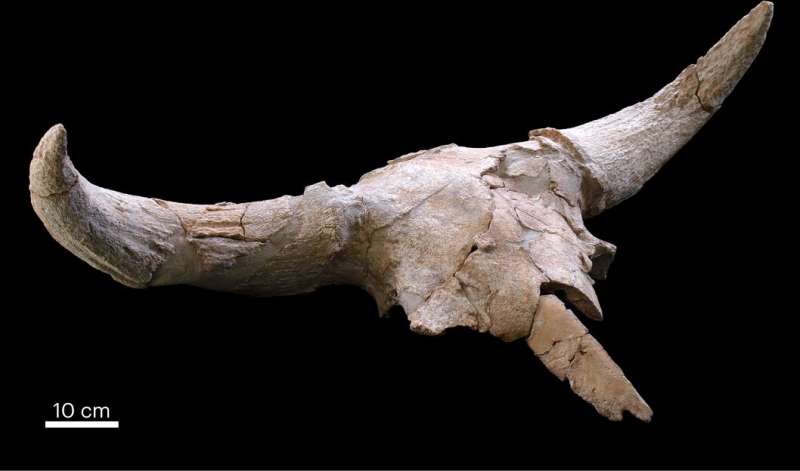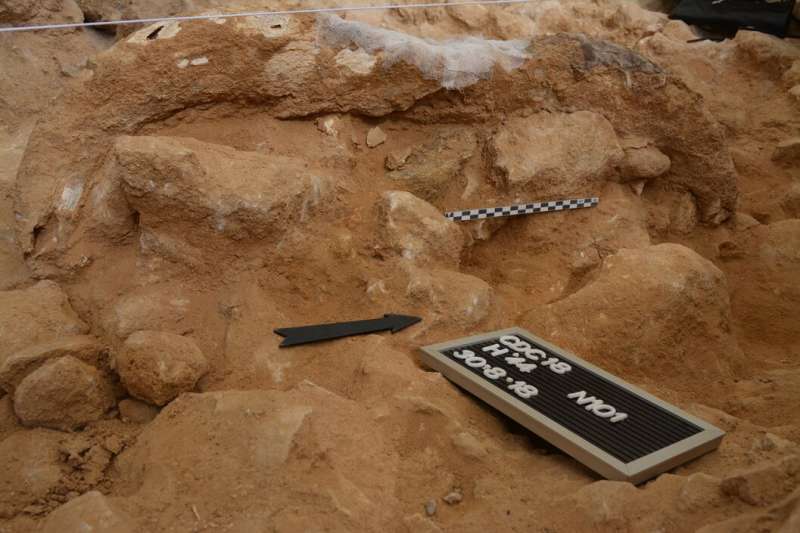January 27, 2023 report
This article has been reviewed according to Science X's editorial process and policies. Editors have highlighted the following attributes while ensuring the content's credibility:
fact-checked
peer-reviewed publication
trusted source
proofread
Large number of animal skulls found in Neanderthal cave

A team of researchers affiliated with a host of institutions across Spain, working with one colleague from Portugal and another from Austria, has discovered a large number of animal skulls placed by Neanderthals in Spanish cave more than 40,000 years ago.
In their paper published in the journal Nature Human Behavior, the group describes the site where the skulls were found, their condition and theories about why the skulls were placed in the cave.
The Cueva Des-Cubierta cave located in the Madrid Region of Spain was first discovered in 1978. Since that time, archaeologists have visited and studied the multilevel cave because it became clear that Neanderthal groups used the site for conducting rituals. Bones and tools have been found in the cave, as have the remains of a Neanderthal child. In this new study, the researchers climbed to the third level of the cave to see if Neanderthals had used it, as well.
The researchers found multiple animal bones scattered on the floor in addition to an assortment of large herbivore skulls. The researchers found that the skulls had been carefully removed from the bodies and had been "worked" in different ways using tools and, in some cases, fire.
A common theme among the skulls was the display of prominent features, such as horns. Most of the skulls had once belonged to bison or aurochs, extinct cows. But they also found the skulls of five male deer (with antlers) and two rhinoceroses. The discovery of the rhinoceroses was a major surprise, and the researchers chose to name one of them Rosendo, after the famous Spanish rock star.

The team notes that finding such a collection of skulls suggests that the Neanderthal groups that brought them into the cave had something in mind besides food. The skulls were large and heavy and would have provided little nourishment, suggesting their presence in the cave served some other purpose. The researchers suggest they may have represented hunting trophies.
More information: Enrique Baquedano et al, A symbolic Neanderthal accumulation of large herbivore crania, Nature Human Behaviour (2023). DOI: 10.1038/s41562-022-01503-7
Journal information: Nature Human Behaviour
© 2023 Science X Network


















